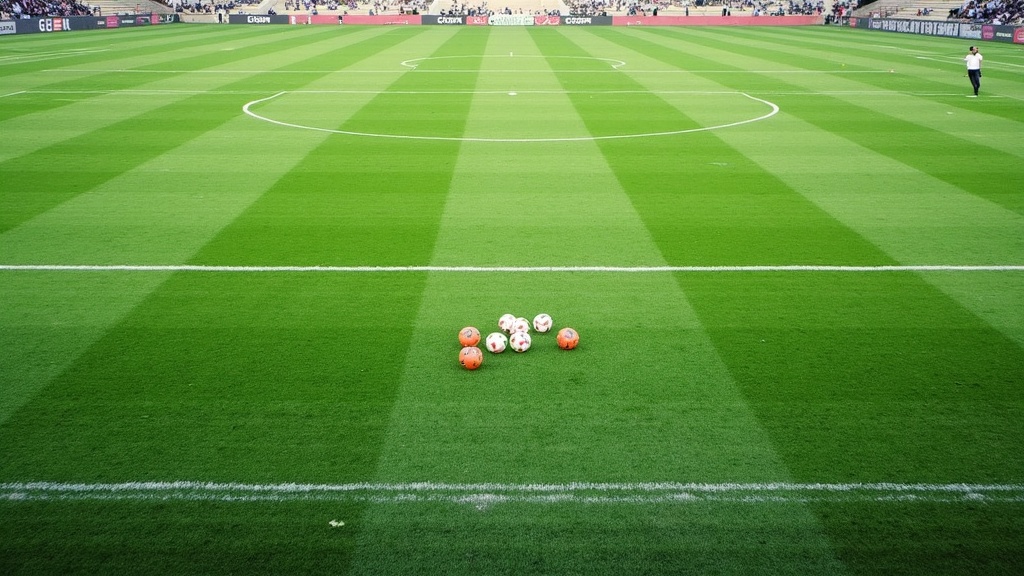 Transitions in soccer can make or break your game. When a team switches quickly from defending to attacking, it often catches the opposition off guard. This is where chaos meets opportunity. One moment you’re stopping a threat, and the next, you’re on the move with a chance to score.
Transitions in soccer can make or break your game. When a team switches quickly from defending to attacking, it often catches the opposition off guard. This is where chaos meets opportunity. One moment you’re stopping a threat, and the next, you’re on the move with a chance to score.
If you’ve ever wished your team pushed forward a little faster after winning the ball, or if you want to add more punch to your counterattacks, you’re in good company. Most players and coaches know transitions are important, but getting them right takes more than just running hard. It takes planning, teamwork, and a bit of situational smarts. CHECK OUT : LEARN HOW TO DO WORK FROM HOME
I’m going to share 10 practical tips to help you and your team move seamlessly from defense to offense in soccer. Whether you’re part of a local club or just enjoy pickup games, these pointers can help you become more confident whenever the ball changes hands.
1. Anticipate the Turnover, Stay Mentally Ready
Many players switch off as soon as their team wins the ball back, wasting those first few crucial seconds. Staying mentally switched on means always being prepared for a quick change in possession. When defending, keep glancing at teammates’ positions and open space ahead of you. The second your team wins the ball, you’re already a step ahead in knowing what to do next.
- Watch for cues: loose balls, pressured defenders, and interception opportunities.
- Build the habit of thinking one step ahead during defense.
Being mentally ready gives you precious moments to react and coordinate. Great teams develop this awareness through habit, not just talent.
2. Create Space, Spread Out After Winning the Ball
The moment your team regains the ball, space shrinks fast unless players react quickly. The goal is to spread out, stretch the field, and make yourself available for a pass. Wingers, fullbacks, and midfielders should instantly peel wide or push upfield to offer options and make it harder for the defense to regroup.
- Use your first touch to face upfield and scan for open space.
- Encourage teammates to move off the ball and give you passing lanes.
By spreading out, you make the opposition chase and open up more space for creative movement and quick passing.
3. Aim for Quick, Simple Passes
Trying to dribble through traffic or force elaborate passes right after winning the ball can slow everything down. Quick, simple passes move the ball upfield and switch up the defensive shape you’re up against. If you can make two or three solid passes in five seconds, you’re way more likely to catch defenders out of position.
- Always look for the nearest open teammate first.
- Limit touches until your team is safely out of your own half.
Speedy, simple passing is often more effective in a transition than showy skills. Prioritize accuracy and tempo over flair in the first moments after winning back the ball.
4. Exploit the Flanks
Most defenses get caught out wide during transitions. When you swing the ball to the wings, you stretch defenders, isolate fullbacks, and open room for crosses or cutbacks. This approach is super useful for teams with quick wingers or overlapping fullbacks who love to join the attack.
- Look to switch play quickly when the ball is won in central areas.
- Encourage wide players to make forward runs as soon as possession changes.
The sides of the field aren’t as congested after a turnover. Use that to your advantage by putting the ball out wide and running at defenders before they can recover.
5. Support the Ball Carrier, Make Forward Runs
Transitioning fast isn’t just about the player with the ball. Teammates without the ball need to sprint forward, offer options, or draw defenders away from dangerous areas. The more runners you send during a transition, the more chaos you cause for the opposition.
- Central midfielders and strikers should dart into open gaps.
- Leave defenders guessing by varying both direct and diagonal runs.
When everyone moves together and supports the ball carrier, your team can attack with unpredictability and numbers.
6. Communicate Loudly and Early
Your team can only move as a unit if everyone’s on the same page. Loud calls, hand signals, and constant talk help players know when to hold back, push forward, or play it out wide. Good communication speeds up decision-making and avoids confusion in those first few moments after a change in possession.
- Call out space and player runs, not just who is open.
- Use short, clear cues: “switch,” “open,” “go wide.”
Sharpening communication ensures fewer mistakes and helps transitions happen more smoothly. Don’t be afraid to speak up and encourage teammates to do the same.
7. Trust Your Defensive Shape When Pushing Forward
Sometimes teams hesitate to join the attack because they’re scared of getting caught on the counter. Keeping one or two holding midfielders back and making sure your defense stays organized allows more players to move up confidently. Trusting your shape takes some practice but pays off by letting you commit numbers forward without getting exposed.
- Assign clear roles for who stays deep and who pushes up after turnovers.
- Don’t get caught ball-watching; defenders should still mark potential threats.
Confidence in your defensive setup gives the rest of your team freedom to jump into the attack. Clarity of roles helps you defend even while pushing numbers forward.
8. Practice Transition Drills Regularly
Executing smooth transitions comes from muscle memory built on the training ground. Small-sided games with rules (like scoring quickly after regaining possession) build speed and awareness. Drills that focus on quick passes, explosive movement, and position switching help everyone develop instincts to react fast.
- Try games where the team has a set time (like 6 seconds) to launch a counterattack after winning the ball.
- Switch up formations and have defenders join the attack in certain drills to get everyone used to moving as a unit.
Consistently practicing transition drills makes quick reactions second nature and develops team chemistry under pressure.
9. Make Smart Decisions, Know When to Slow Down
A fast break isn’t always the right move. If your team can’t outnumber the defense or the passing lane isn’t there, sometimes it makes more sense to slow down, hold possession, and wait for support. Good players read the game and know when to push and when to calm things down.
- If the counter isn’t on, pivot to maintaining possession and controlling the tempo.
- Talk to teammates to reset and organize new attacking options.
The smartest teams aren’t the fastest, but the ones that make the right call in the moment. Slow down when necessary instead of risking a turnover with a forced pass.
10. Rehearse Different Scenarios
No two games are the same, and transitions can start from different parts of the field. It makes a big difference to practice winning the ball in different zones (like high up the pitch, deep in your half, or out wide) and seeing how your team responds. The more scenarios you go through in practice, the easier these situations feel during a match.
- Set up drills with the ball won by defenders, midfielders, or forwards to practice varied reactions.
- Mix in live games with changing objectives to keep players alert and adaptive.
Being ready for any situation comes from mixing up your preparation. Work through as many scenarios as you can to get all teammates comfortable and on the same page.
Building a Seamless Transition Mindset
Transitioning from defense to offense smoothly is a skill you improve over time. It relies on quick thinking, good habits, and consistent team practice far more than just raw speed. When all players know what’s expected during a turnover, your side creates more chances, concedes fewer goals, and keeps matches under control. Outrunning your opponent starts with outthinking them. Working on transitions makes a team connect the dots between solid defense and aggressive attack, helping everyone enjoy a smoother, smarter soccer experience.
